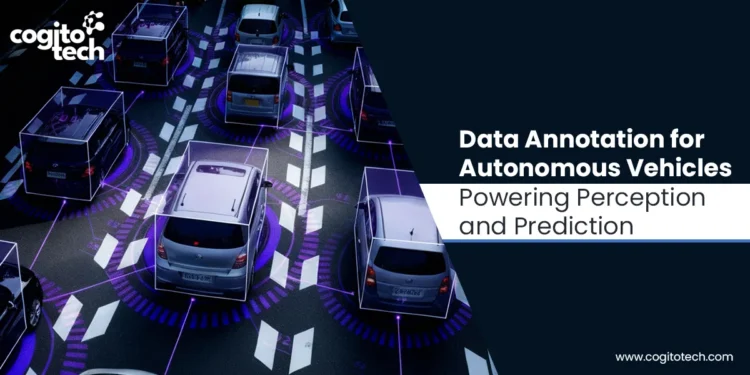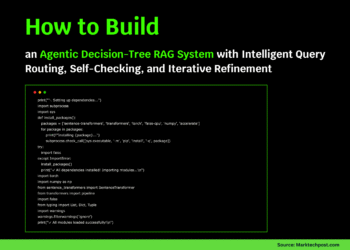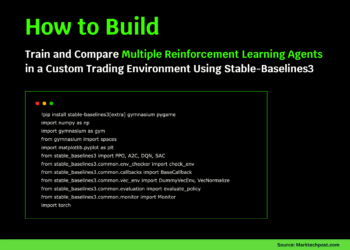Autonomous vehicles rely on deep neural networks that require massive amounts of labeled data. Without carefully annotated datasets, even the most advanced models cannot learn to recognize objects, interpret road conditions, or respond to unpredictable events. In this article, we’ll explore data annotation for autonomous driving and how it empowers self-driving vehicles to make sense of their environment and navigate safely in the real world.
Data annotation for autonomous driving model training
Data serve as the foundation for the development of autonomous vehicles, forming the base upon which their intelligence is built. These systems require vast computer vision datasets collected from multiple sensors, including cameras, LiDAR, radar, and ultrasonic sensors.
The vehicle constantly collects massive streams of information (such as video frames, laser point clouds, GPS data, radio signals) from all directions through sensor fusion. This raw data is then annotated and curated to provide the contextual information and labels necessary to train deep learning algorithms for comprehensive understanding of the environment, enabling real-time, informed navigational decisions.
Annotated computer vision and sensor datasets enable autonomous vehicles to identify and interpret objects, understand road signs, sense pedestrian movements, and navigate complex traffic environments. Modern self-driving cars are equipped with over 15–20 external sensors to ensure redundancy and provide comprehensive environmental coverage.
A single self-driving car generates terabytes of data per day from cameras, radar, lidar, and other sensors. However, this raw sensor data is so massive and unstructured that it is essentially unusable to a computer until processed and contextualized. Neural networks must be trained to understand real-world objects and features that are critical for safe driving, such as lanes, signs, pedestrians, and vehicles. This requires human annotators to label the raw sensor data, marking every semantic element (e.g., drawing a bounding box around every car, drawing lines for every lane, or coloring every pixel belonging to a pedestrian). These annotations create the structured ground truth needed to train machine learning models effectively.
Objects annotated for autonomous driving datasets
Various objects are annotated to train sophisticated machine learning algorithms that enable autonomous vehicles to understand and navigate their surroundings effectively. Some of the key objects labeled include:
- Vehicles: Other vehicles, such as cars, trucks, motorcycles, and bicycles, are annotated to help self-driving cars detect, classify, and track moving on the road.
- Pedestrians: Humans and animals need to be accurately annotated to ensure the vehicle can recognize and predict their movements, minimizing collision risks.
- Cyclists: Cyclists’ annotation is essential for predicting their behaviour on the road, including speed, direction, and potential interactions with other vehicles.
- Road signs and traffic signals: Annotated road signs, traffic lights, and other regulatory signals enable autonomous vehicles to comply with traffic rules, such as speed limits, stop signs, and lane guidance.
Data annotation techniques used for self-driving cars
Several types of data annotation techniques are used to label various types of computer vision data. Here are some of the commonly used data annotation methods:
- Bounding boxes: Bounding boxes are used to draw rectangular shapes around objects of interest, such as vehicles, pedestrians, and obstacles, to mark their location and extent within an image or frame of sensor data.
- Polygon segmentation: Polygon segmentation technique is used to outline objects in images to train the vehicle to differentiate between objects and the backgrounds.
- Semantic segmentation: This technique labels each pixel in an image with a corresponding class label, such as vehicle, road, pedestrian, or background, to provide detailed information about the different objects and regions present in a scene.
- 3D cuboids: Cuboids are drawn around objects to train the algorithms to understand their dimensions and spatial orientation. This enables the vehicle to better recognize and interact with objects in real-world driving environments.
- Landmark and keypoint annotation: Landmark annotation is used to label specific points or key features within an image or dataset. These landmarks often represent unique points of interest, such as facial features, vehicle edges, or lane markings, depending on the annotation task.
How does data annotation help autonomous vehicles?
Data annotation enables the core capabilities that make autonomous driving possible, including:
- Object detection: Annotated computer vision datasets help models identify and locate multiple objects, such as vehicles, pedestrians, and obstacles, within a scene, enabling real-time perception of the environment.
- Lane detection: Labeling lane markings, road edges, and curbs enables autonomous vehicles to accurately interpret road layouts and maintain proper lane positioning while navigating.
- Mapping and localization: Annotating landmarks and key features in sensor data enables detailed map creation and precise vehicle localization, which are critical for developing robust localization algorithms and mapping techniques that are essential for autonomous navigation.
- Projection and planning: Labeled data helps train autonomous vehicle algorithms to perceive their surroundings, predict the motion of other objects, and make informed decisions to navigate safely and efficiently.
Cogito Tech annotation services for autonomous vehicles
Cogito Tech delivers a specialized service model that transforms autonomous vehicle data labeling into a scalable, high-accuracy operation. Our workflows are engineered to handle the complexity of multi-sensor data pipelines required to train safe and reliable self-driving systems. By combining automation with targeted human oversight, we ensure precision where it matters most while keeping projects efficient and cost-effective.
Our expertise spans annotation across LiDAR point clouds, radar signals, camera imagery, and HD maps. The team is skilled in using a range of techniques, including 3D cuboids, bounding boxes, semantic segmentation, keypoint annotation, and polygonal outlines, to capture objects, traffic signs, road markings, pedestrians, vehicles, and other environmental features essential for perception and decision-making. We leverage graphical user interfaces (GUIs), advanced tools. Rigorous quality assurance, including error detection, label verification, and inter-annotator consistency checks, ensures dataset reliability.
Core capabilities
- Enhanced model accuracy: Precise multi-sensor annotation techniques optimize perception models and improve decision-making performance.
- Accelerated development cycles: Scalable data pipelines and flexible workforce integration shorten dataset turnaround times.
- Cost-efficient operations: Intelligent automation combined with expert validation reduces labeling costs while maintaining industry-grade quality.
- Data security & compliance: End-to-end workflows adhere to international privacy and security frameworks, ensuring the safe handling of autonomous vehicle datasets.
Conclusion
The journey toward fully autonomous driving depends on the precision, depth, and diversity of annotated data that fuel AI learning. Data annotation bridges the gap between raw sensor inputs and intelligent perception, allowing self-driving systems to detect, classify, and respond to real-world scenarios with human-like accuracy. From identifying objects and detecting lanes to predicting movement and planning routes, annotation serves as the invisible intelligence behind every decision an autonomous vehicle makes.
As the automotive industry accelerates toward higher levels of autonomy, the demand for accurately labeled, multi-sensor datasets will only continue to grow. This is where Cogito Tech plays a pivotal role, delivering accurate and compliant annotated data that enables developers to build safer, smarter, and more dependable autonomous driving systems. By combining automation with human expertise and maintaining the highest standards of quality and security, Cogito Tech is helping shape the future of autonomous mobility, one precisely labeled dataset at a time.

















